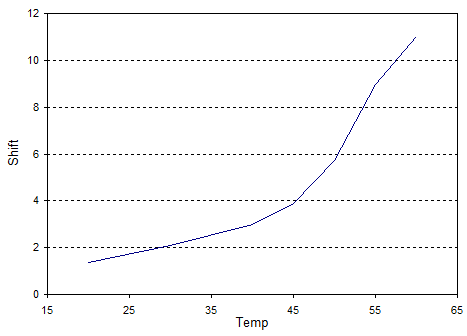I've done experiments on the thermo-viscoelasticity of liver tissue and the following results
temp shift
1 20 4
2 30 8
3 40 20
4 45 49
5 50 300
6 55 8000
7 60 60000

(source: npage.de)
.
show a curved line in a loglog-plot, which means I can't use a power-law function to approximate my data.
Do you have any idea what kind of function might work for my data? I've tried superlinear functions of the type y(x) = a^x^b but that doesn't seem to lead to a good fit.
I'm adding a plot of the same data plus 2 additional temperatures (70 and 80).
temp shift
1 20 4
2 30 8
3 40 20
4 45 49
5 50 300
6 55 80000
7 60 600000
8 70 9000000
9 80 9000000

(source: npage.de)
.



temp? $\endgroup$